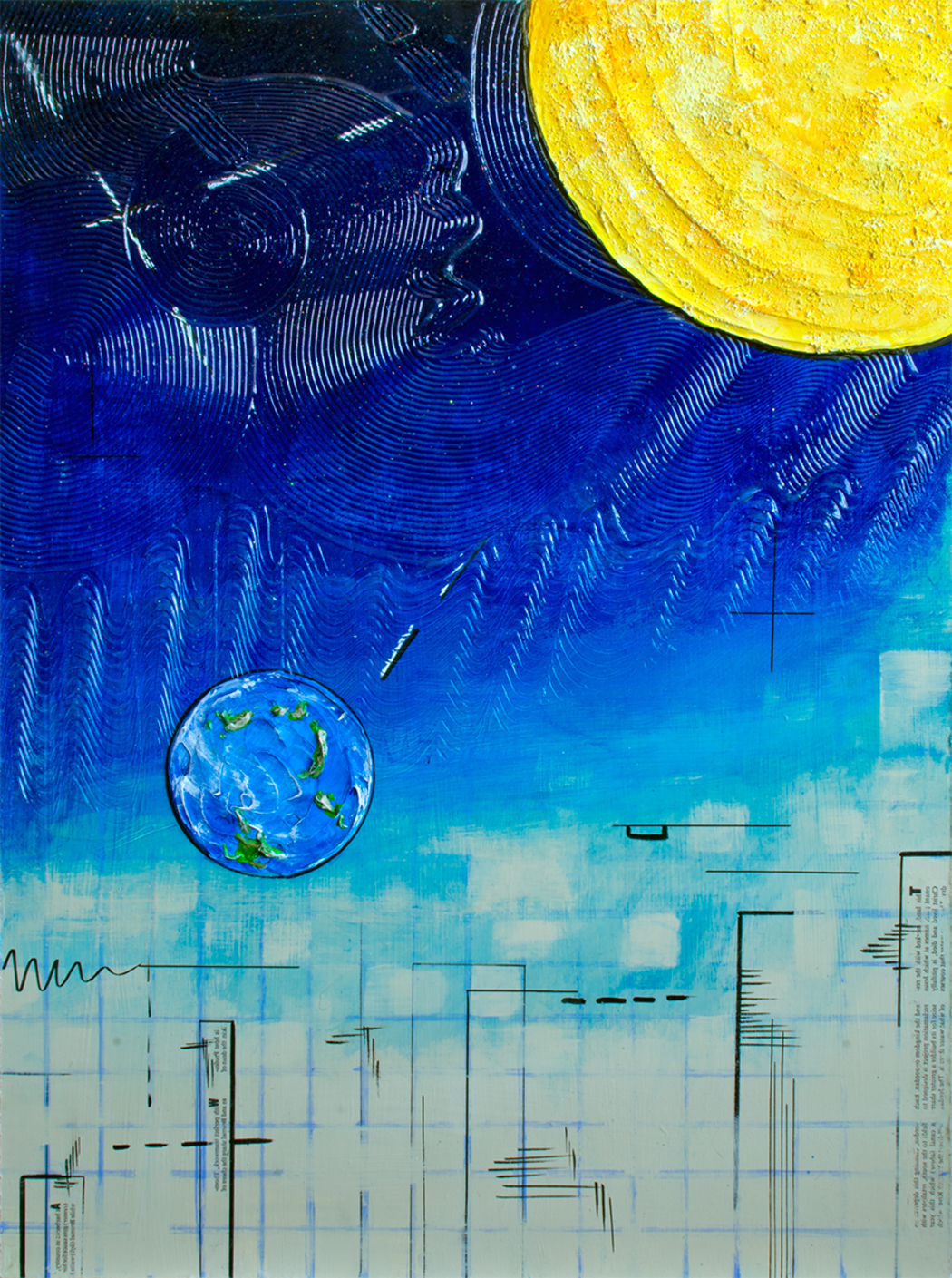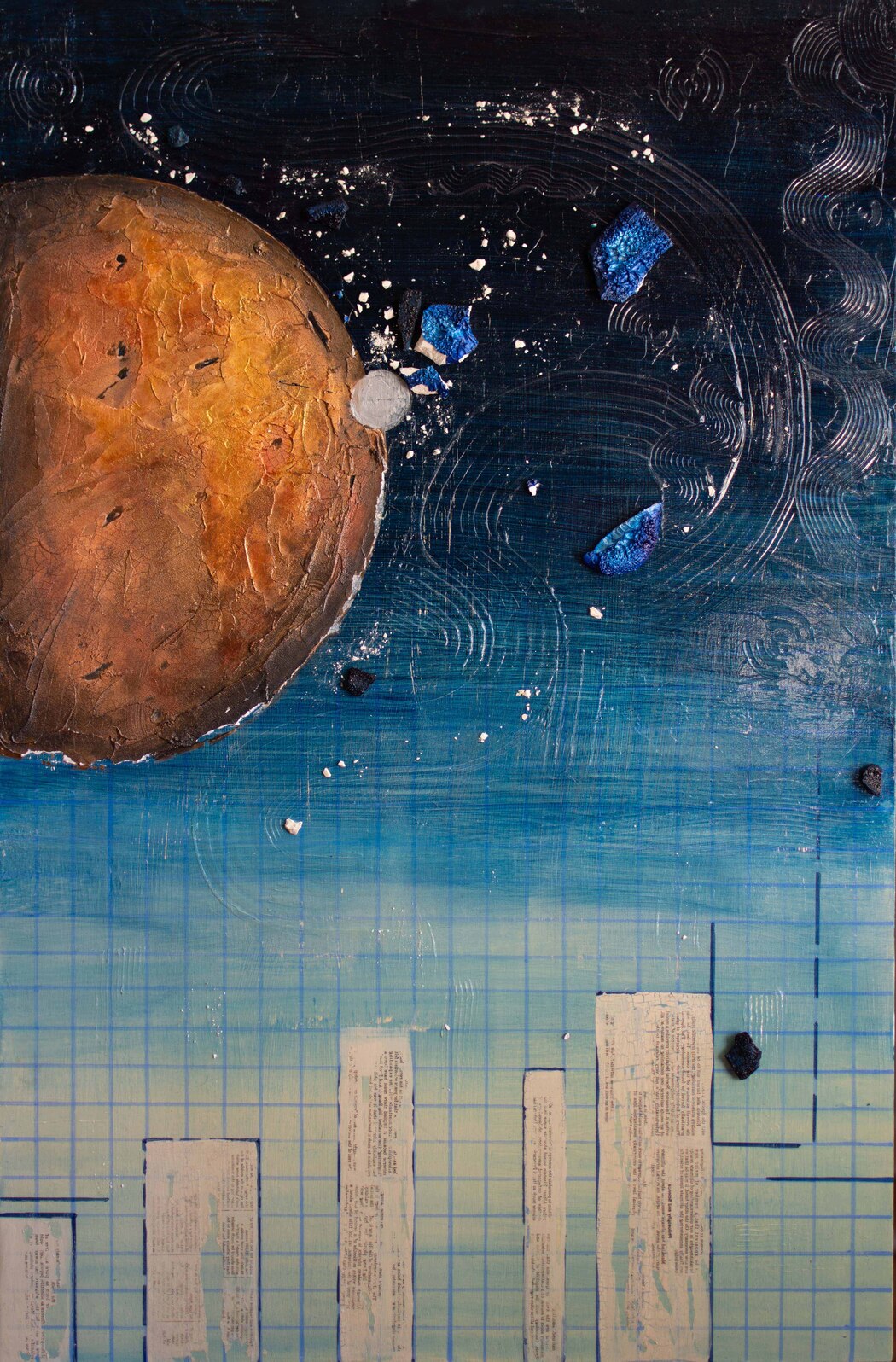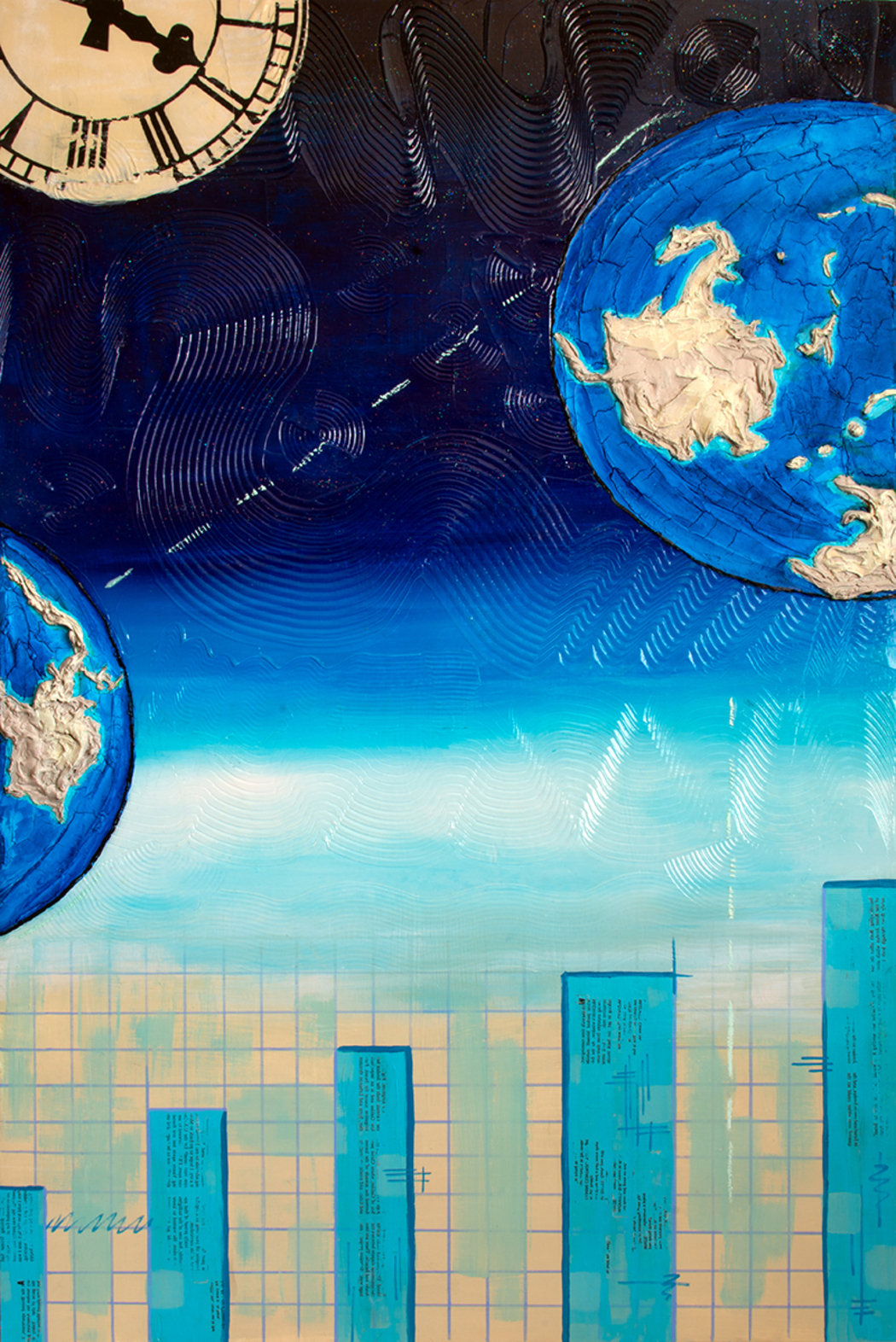Brittany C. Ellis
 Brittany C. Ellis | Archean Period
Brittany C. Ellis | Archean Period
Your work combines 2D and 3D elements with celestial themes. What first drew you to outer space as a subject of artistic exploration?
As a child I wanted to be an astronaut. I would often visit the library in my elementary school and check out numerous books about the planets within our solar system. I wanted to be an astronaut to explore the rocks and minerals in outer space. Little did I know there was a completely different career designated to mineral research. I still planned to become a gemologist until 2008, when I decided to pursue a career in fine art with the intention of returning to gemology. As of now, I am four classes away from obtaining my gemology degree.
You describe space as a “secret getaway” from childhood. How does this personal history shape your current artistic voice?
Oddly enough, space and art can still be seen as my secret getaway from the trials and tribulations of adulthood. The natives within my artwork are often envisioned when I am zoning out in many daily situations or even are sparked by a statement said or an instance I witnessed. My paternal grandfather cultivated my imagination, asking me to imagine the reality we would enact for the day which became our fantasy world created through my imagination as a child.
 Brittany C. Ellis | Hellish Hadean
Brittany C. Ellis | Hellish Hadean
The vertical format in your “Space to Earth” series is very striking. How does composition contribute to the feeling of transitioning between reality and imagination?
Extending acrylic graph lines with text blocks replicate the evolutionary process of progression which fuse into a textured space background and 3D sculpted Earth. Using a vertical format simulates the feeling of transitioning from reality to daydreaming. Each painting’s daydream is a peek into the past time of the Earth. – The materials and tools I use change with each composition but I average using 4 mediums and 6 different tools in each artwork to accomplish a desired effect. The common material I use includes acrylic, ink, paste, and various gel mediums. The unconventional embellishments I use charge with each composition. The addition of lights is a recent unconventional item I began using in my art.
You reference the continental drift and historical stages of the Earth. Do you conduct scientific research as part of your creative process?
That is a good question. Essentially, all the artwork I produce requires scientific research in order to create a compelling and believable composition. Although all of my works are imaginative, they require an extensive amount of knowledge, both scientific and artistic. My favorite piece of information that I discovered for a painting was when I discovered that the principles of atmospheric perspective applying on Mars.
 Brittany C. Ellis | Theia Collision
Brittany C. Ellis | Theia Collision
What role does nostalgia play in your art? How do you think viewers respond to the childlike wonder embedded in your work?
Nostalgia is a driving force in my artwork attached to my childhood. From an early age, I’ve always been an avid daydreamer, imagining I was somewhere other than where I was. An intriguing phrase or a simplistic word in a book would unlock the gateway that ignited my imagination. Often, I would zone out, becoming immersed in an imaginary world, observing an unraveling scene similar to watching the Magic School Bus. As a child, my grandfather encouraged these immersions, which led to them not only becoming a fun aspect of my childhood but helped me to utilize these immersions as defense mechanisms triggered by difficult experiences in school. Everything I experienced as a child formed the artist I’ve become today.
 Brittany C. Ellis | The Cambrian Explosion
Brittany C. Ellis | The Cambrian Explosion
How has your background in photography influenced your approach to painting and sculptural relief?
My background in photography aids my artwork in a form and proportion sense. Although my artwork is composed of imagined compositions, I use objects from images I’ve captured. Photography is used to obtain photo reference.

Leave a Reply